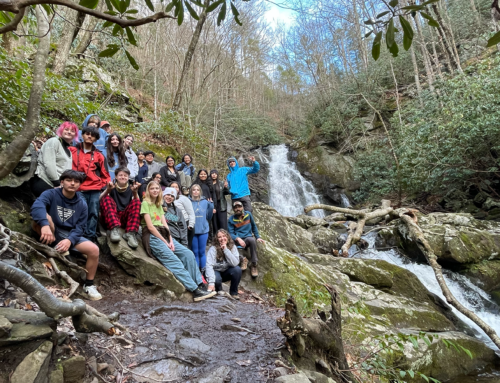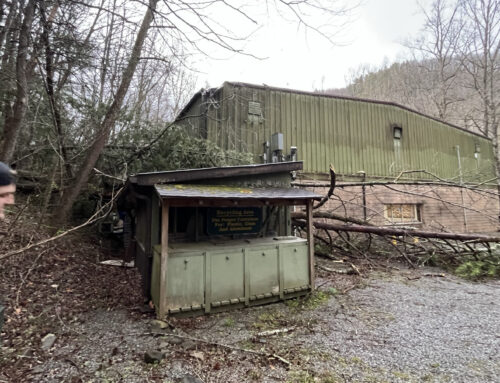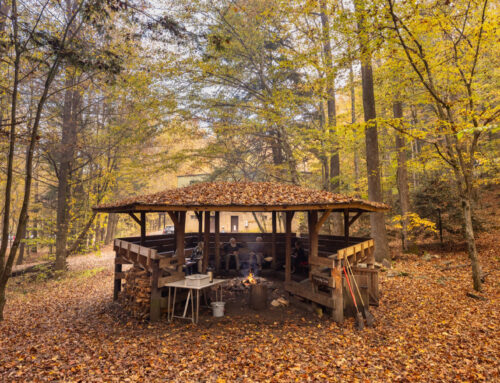Written by Joseph K. Gordon, Professor of Theology at Johnson University and a Certified Master Herpetologist
Apparently I am a poet. This realization has been, and continues to be, surprising to me. It is almost as surprising as the experience of writing the poem, “Patience,” that I composed—though it would be better to say it spilled out of me—during the Naturalist Skills course at Tremont in February this year. There’s no doubt in my mind that it would not be possible apart from the privilege of learning, listening, and patiently waiting in the Walker Valley during six of the eight courses in the Southern Appalachian Naturalist Certification Program (only the Mammals and Plants courses remain, plus electives). I’d like to share some of the insights from my time in the SANCP that are in the background of the poem. Before I proceed, though, I should note that there are spoilers ahead! To get the most out of the poem and these reflections, you should read the poem first and then come back to this blog post (take your time, I’ll wait).
One of the fundamental skills of being a naturalist is waiting without knowing what might come to you. Early in my time doing the SANCP I remember the distinctive, jarring experience of sitting down near the river in the dark during the Skills for Sharing Nature course. As I sat, my consciousness completely silent, attuned only to the sounds of the night, it was as if layer after layer came to me. I would think I had heard, and mapped, the entirety of the soundscape, and yet another riffle would rise—not in reality but in my mind. Each had already been there singing, but I had to stop my mind in order to wait to receive, and attend to, each one.
The waiting involved in being a naturalist attunes one to the patience and waiting of the more-than-human world itself. If I close my eyes I can still almost see sunlight dancing between the leaves on the slope of the old-growth forest along the Cove Hardwood Nature trail at the Chimneys Picnic area. As we discussed pit and mound topography, snags, canopy openings, and nurse logs during the Appalachian Ecology Course last September, an image flashed in my mind: trees rising up, ascending for decades, even centuries, and then falling to the ground, and falling into the ground as various microorganisms, fungi, and invertebrates decomposed them over even longer stretches of time. The slow pace of that growth and decay, punctuated by the violence of tree falls from storms, left a major impression that accompanies me every time I reenter the forest.
Just as I did not expect to be a poet, I have not expected to be a naturalist. But given my lifelong, intense fascination with reptiles and amphibians, spiders, and insects, I suppose that I should not be surprised. When my good friend, and now SANCP graduate, Adam Bean encouraged me to get on the waitlist for the Reptiles and Amphibians course in the summer of 2019, I had no idea what would be in store. In the time since then, in addition to the SANCP courses, I have read over twenty books on herpetology and ecology (including Ted Levin’s America’s Snake: The Rise and Fall of the Timber Rattlesnake, no doubt a significant influence on the poem), completed a Master Herpetologist certification through the Amphibian Foundation, begun a new snake science project with Tremont, and published a couple of scientific observations in Herpetological Review.
But nothing has been as surprising as the poem itself. On Sunday morning of Naturalist Skills class, I sat on the western side of the friendship circle, notebook open, gazing east. Before Logan Rosenberg could even start giving instructions for our poetry exercise, I noticed a felled tree that was not on the ground the last time I sat in that location. I confess that I ignored Logan’s instructions (sorry Logan). But the words of “Patience” came to me in a torrent, so quickly that I worried I would not be able to keep up with them. In retrospect, they were already there, in a way, in all of the patience, the slow yet steady accumulation of insights, experiences, and observations from my childhood through the present, from reading, and especially from the formative experiences of the Southern Appalachian Naturalist Certification Program. So now I look forward to what will come to me through further exercises of patient waiting, both in the remaining courses in the SANCP, and, indeed, for the rest of the time, I will have to be in the forest.
Inspired to develop your connection with nature? Check out Tremont’s Naturalist Skills class on September 16-18, 2022.
Cover image by Karen Gravagna, a participant in Tremont’s spring photography workshop.







